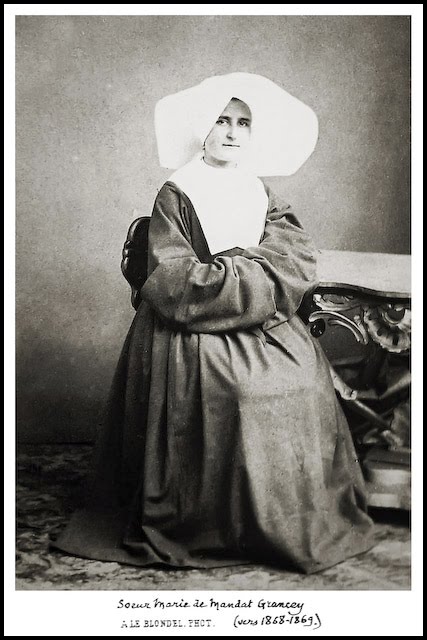Sister Marie makes a deposit in the bank for the purchase of Panaghia while everyone waited for Mr. Binson to learn the results of The Bey’s suit; and Father Louis Duchesne disputes the visions of Anne Catherine Emmerich. Doubt still clouded the discovery of Mary’s Home on Nightingale Mountain. This was evidenced by a letter sent from Father Duchesne to Rev. Fiat, Superior General of the Lazarists, on 5 February 1892. Father Duchesne wrote:
“It is my duty, I believe, to call your attention to the recent discoveries which took place close to Ephesus and to the incredible state of mind in which your brothers there seem to find themselves. One of them, Fr. Poulin (if I read correctly his signature), is consulting me on this matter. I am answering him in unfavorable, but general terms.
“At first sight, it seems to me extremely imprudent to use the revelations of Anne-Catherine Emmerich as these gentlemen do. These revelations are the products of a sure imposture, in which, however, it would be advisable to make a large allowance for suggestions and unconsciousness. To introduce such elements into the area of tradition and archaeology is to err in the most grievous way. If publicity should come about, you will see the sarcasms that will befall the Lazarists of Smyrna. However, it would be very regrettable that the esteem these gentlemen enjoy would be undermined. They represent France and Catholicism in such a dignified way, in the East, that we could never care enough for their reputation.
“I am available, Most Reverend Father Fiat, to provide you with more information, should you wish to ask me.”
Sister Marie, meanwhile, was hard at work on her own. On 27 February 1892, she deposited a check for 45,000 francs into a special account in the Smyrna branch of the Credit Lyonnaise Bank. The account was established for the purchase of the property in question.
One of Father Poulin’s colleagues, G. Dumont, enjoyed his stay in Paris, not to dispute with Louis Duchesne, but to transcribe the texts of the Fathers and of the historians concerning the question at hand, whether Mary lived her last years in Jerusalem or Ephesus. From the Documents amassed in Paris by Dumont, Father Poulin wrote, and from those that we have been able to find in Smyrna, five things seem to jump out:
1. No known authentic authority for Jerusalem before the sixth century;
2. The first Fathers who spoke of Gethsemane do it in a hesitating manner and do not rely upon the apocrypha;
3. For Ephesus -- (and frankly) the best authors of the 17th and 18th centuries;
4. The most recent historians are divided; half for Jerusalem, half for Ephesus, or they are happy to mention the two opinions without taking sides;
5. Of this whole, one conclusion can be made; Ephesus balances Jerusalem and threatens to replace it.
This result, Father Poulin wrote, was obtained in 1892, five years before the brochure “Ephesus or Jerusalem,” and 14 years before the monumental work of Johann Niessen (1906). We do only want to put in doubt number 4 on the half and half divide of the two opinions, which is almost impossible to verify, and which has no importance since it is not their quantity that counts, but their quality. We have transcribed this result with all the more satisfaction because it synthesizes perfectly the studies that we ourselves have conducted over the years.
Then on 4 March 1893, he wrote to one of his colleagues from Paris, Amedee Allou:
“Do not believe that we have blindly jumped into this affair of Panaghia. I see with a calm eye the obstacles that men and things could throw in its path. The rock has detached from the mountain, but that does not stop it from rolling on.” (Cited in “Ephesus or Jerusalem.”)
Segment 19: Purchase of Panaghia is finally completed.
Sr. Marie De Mandat-Grancey Foundation
P.O.Box 275
Cold Spring Harbor, NY 11724 USA
P.O.Box 275
Cold Spring Harbor, NY 11724 USA
" I am not a priest and cannot bless them, but all that the heart of a mother can ask of God for her children, I ask of Him and will never cease to ask Him." ~ Sister Marie

“The grace of our Lord be with us forever.” ~ Sr. Marie










